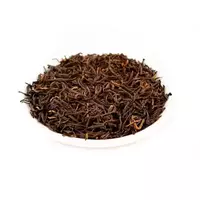Red tea

Sometimes it is quite difficult for a European person to understand and understand all the intricacies of Asian culture and traditions. We think for this reason in our latitudes they do not always correctly interpret and call certain culinary rules and ingredients. The most striking example of such confusion in concepts may be red tea. In the terminology of the domestic food industry, red tea is such varieties as karkade or roybos.
However, neither drink has absolutely nothing to do with tea wood, because the framework is made from hibiscus petals, and roybos tea is from the plant of the same name, which belongs to the Legow family. In fact, red tea refers to the elite and noble varieties of Chinese teas. Red tea in its appearance practically does not differ from all of us usual black tea. Interestingly, due to ignorance in our latitudes, it is customary to call almost all varieties of Chinese red tea black tea.
The main feature of the drink is that after brewing the leaves of Chinese red tea, the drink acquires a distinctive color in red colors. Because of these properties of red tea, the drink gets its name. Therefore, do not be surprised if red tea is written on the package of the drink, and the contents will be completely identical to ordinary black tea. After brewing red tea, you will immediately see and feel the difference in the taste and aroma of the noble drink.
Roybos tea and karkade are also called red tea for the distinctive color of the final drink. However, these tea varieties also differ in their appearance, in which red is present. Despite the fact that nominally any black variety of tea drink belongs to the Chinese classification to red species, real red tea has absolutely nothing to do with all of us familiar black tea. The distinctive beneficial properties of red tea make this drink unique. Moreover, real red tea is grown and harvested only in China.
Red tea benefits
The quality of red tea is much higher than the black variety of the drink. This is primarily due to the process of prolonged fermentation. The benefits of red tea lie also in the process of producing the drink. According to legend, red tea owes its appearance to a sharp change in weather. Heavy fog affected the process of fermenting tea, which was left in the open air. The result was an amazing red tea in taste and aroma.
Thanks to the improved fermentation process, the composition of red tea is saturated with additional useful vitamins and biologically active compounds. Perhaps in the chemical composition of the product lies the main benefit of red tea for the human body. Red tea has a generally strengthening and tonic effect on humans. In addition, red tea contains a large amount of polyphenol and essential natural amino acids.
Red tea harm
However, in addition to benefits, there can be significant harm from red tea. For example, the drink is absolutely contraindicated in people suffering from peptic ulcers, as well as gastritis or atherosclerosis. The harm of red tea can be expressed in increased excitability and insomnia if you consume the drink in large quantities or at night. Red tea contains a record amount of caffeine, which does not always have a beneficial effect on a person's well-being and health.
red tea 151.8 kCal
Energy value of red tea (Ratio of proteins, fats, carbohydrates - ju):
Proteins: 20 g (~ 80 kCal)
Fats: 5.1 g (~ 46 kCal)
Carbohydrates: 6.9 g (~ 28 kCal)
Energy ratio (bj | y): 53% | 30% | 18%
 Español
Español Français
Français Português
Português Русский
Русский 简体中文
简体中文 繁體中文
繁體中文 日本語
日本語 한국어
한국어 العربية
العربية Türkçe
Türkçe Қазақ
Қазақ Deutsch
Deutsch Italiano
Italiano Українська
Українська
